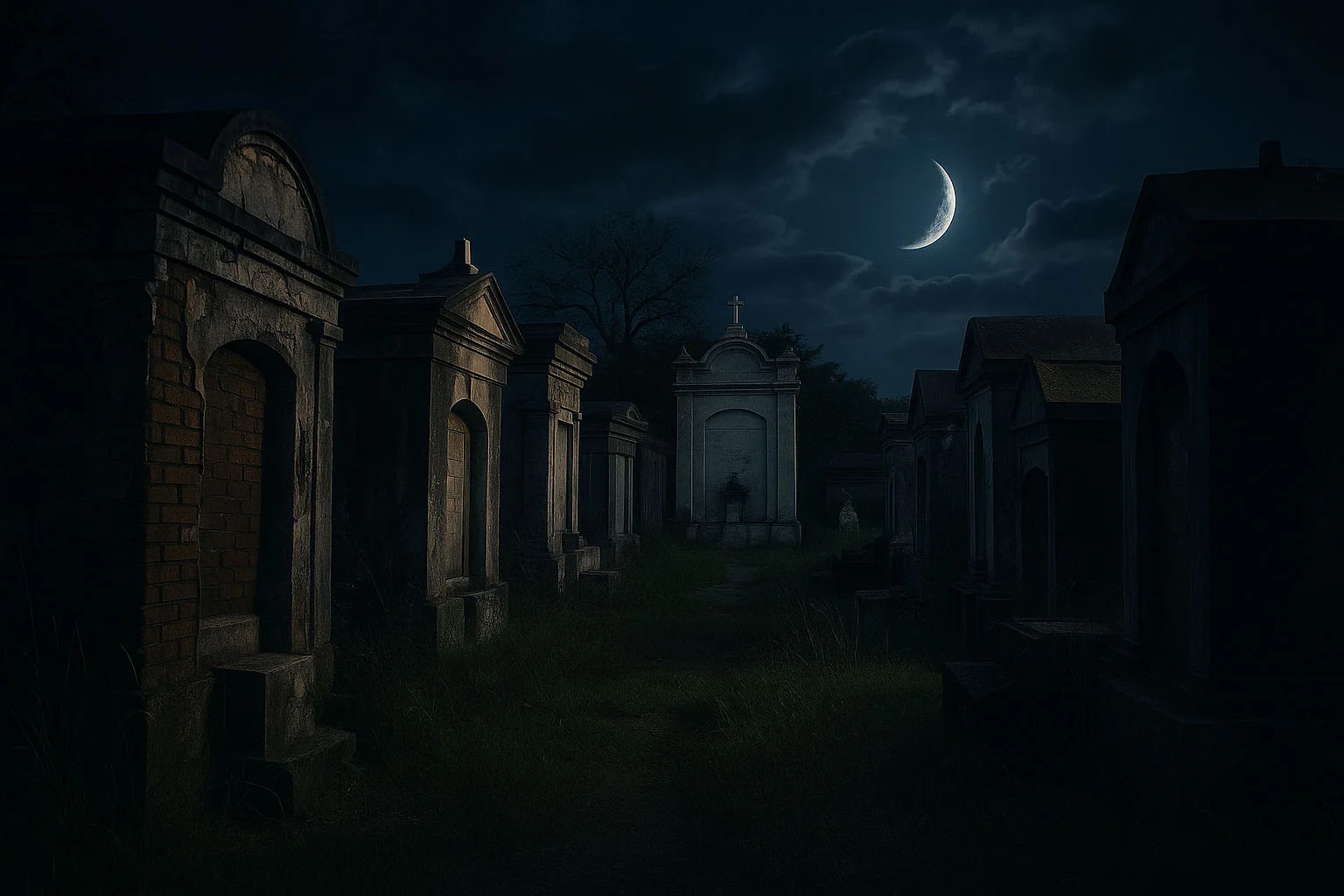If New Orleans is known for one thing (aside from Bourbon Street and Mardi Gras, of course), it's for our cemeteries, and only a city like New Orleans would proudly boast the moniker "Cities of the Dead." Thousands of tourists and locals alike go on cemetery tours in New Orleans every year, where the main attraction is St. Louis Cemetery, No. 1, the final resting place of the voodoo queen herself, [Marie Laveau](https://ghostcitytours.com/new-orleans/marie-laveau/). But, that's just the Space Mountain of this Disney World of cemeteries. New Orleans is home to many underground cemeteries that are defunct, forgotten or lost altogether, and you never know when you may hear the wailing moans, or spot apparitions of those who are destined to haunt their grounds for eternity. Those who dare to explore any haunted cemeteries, would be best advised to heed Marie Laveau's warnings. > "Although one is pure of thoughts and in heart, searches for the gates of the truly dead. You never know when the November winds blow, if the cursed gates are searching for you too." > "If you enter the gates backwards you might have a small chance, to flee with your life all intact. But if your motives are untrue then the living death calls your name, then there is nothing you can do." – Marie Laveau Here are New Orleans' Top Underground/Lost Haunted Cemeteries

Cemeteries
The Ghosts of New Orleans' Underground Cemeteries
The Forgotten Dead Beneath the City Streets
1718-Present•9 min read•By Tim Nealon
Beneath New Orleans lie forgotten burial grounds, mass graves, and lost cemeteries paved over by progress. These underground dead, disturbed by construction and floods, create some of the city's most aggressive hauntings. From colonial plague pits to lost slave cemeteries, the spirits below refuse to be forgotten and regularly break through to terrorize the living above.
Gallery

Ready to Explore New Orleans's Dark Side?
Don't miss out on the #1 rated ghost tour experience in New Orleans. Book your adventure today!
Why Book With Ghost City Tours?
Multiple Tour Options
Choose from family-friendly, adults-only, or pub crawl experiences.
Top-Rated Experience
4.9 stars from thousands of satisfied ghost tour guests.
Tours 7 Days a Week
Rain or shine, we run tours every single night of the year.
Money-Back Guarantee
Love your tour or get a full refund - that's our promise!
Tours Sell Out Daily
New Orleans is a popular destination. Book now to guarantee your spot!
Book Your Ghost Tour Today
Book Online Now
SAVE TIME- Choose from all available tour times
- Instant email confirmation
- Secure, encrypted checkout
- Free cancellation up to 24 hours
Prefer to Call?
Our Guest Services team is available 7 days a week to help you book the perfect tour.
CALL 855-999-04917am - 11:30pm DailySSL Secure
4.9 Rating
6M+ Guests
